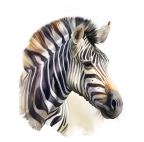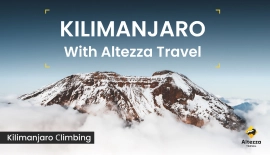
Serengeti National Park
Discover the iconic Serengeti National Park, Tanzania
Renowned as one of Africa's premier safari destinations, the Serengeti offers an unmatched wildlife viewing experience. This vast park is home to the famous Big Five: elephants, lions, buffaloes, rhinoceroses, and leopards, as well as many other animals including giraffes, hippos, and crocodiles. It's also where the Great Migration of wildebeests and zebras takes place. With over 70 species of large mammals and 500 birds, the Serengeti is a must-visit wildlife area.
Together with the Ngorongoro Conservation Area and Mount Kilimanjaro, the Serengeti National Park is recognized as part of the UNESCO World Heritage List.
Where is the Serengeti National Park located?
Is Serengeti in Kenya or Tanzania? - This question is often raised by travelers who plan to visit East Africa. The answer is simple: the Serengeti National Park is located in northern Tanzania, stretching over 1,500,000 hectares (3,700,000 acres) of wild savanna. It can be easily found on the map – to the east of Lake Victoria, the largest lake in Africa, near the border with Kenya.
To the north, the Serengeti borders the Kenyan Maasai Mara National Reserve, and to the east, the renowned Ngorongoro Crater and Conservation Area. The larger Serengeti ecosystem stretches even beyond the national park, being defined by the area covered by the Great Migration.

What is the best month to visit the Serengeti?

By mid-January, the short rainy season ends, and the weather is clear and hot. Giraffes, elephants, buffaloes, and other herbivores enjoy the thick juicy grass, while predators rest in the shade of acacias. In the south-eastern Serengeti, a new cycle of the Great Migration begins: large herds of wildebeest, zebras, and gazelles start moving south across the Serengeti plains in search of fresh pastures.
This is one of the most popular months for safaris, and the park will have many other visitors.
February is the hottest and driest month in Tanzania. The sky is almost always clear, the grass in the savanna dries up, and even small animals - mongooses, serval cats, and dwarf antelopes dik-diks - are easily seen from the safari SUV. Elephants, giraffes, buffaloes, and other large mammals tend to stay closer to the rivers.
During this month, the giant herds of the Great Migration rest in the southern plains of the national park. At this time, wildebeests and zebras give birth to their young, with up to 8000 babies born each day.
Travelers in the park are still numerous, but towards the end of the month, the number of safari vehicles gradually decreases.
March is a warm transitional month between the dry and rainy seasons. Starting from mid-March, there are noticeably fewer other safari vehicles in the park, and many Serengeti lodges begin to offer seasonal discounts. This month is well-suited for travelers who prefer a secluded and peaceful vacation.
Large mammals - elephants, giraffes, buffaloes, lions, leopards, and antelopes - can often be seen both near water bodies and just along the road. Animals have become accustomed to safari vehicles and allow you to take a closer look at them.
In April, rains are common, yet there are days when it's completely dry. Animals in the Serengeti can be encountered in any part of the park: the rains create new waterholes, eliminating the need to stay near rivers. Fresh grass grows, transforming the park's grassland plains from drought-yellow to lush green. Against this backdrop, giraffes, lions, and leopards look particularly picturesque.
At the same time, smaller cats like servals and caracals can be difficult to spot in the dense and tall grass. They are more visible during the dry season in July-September and January-March when the savanna grass is not so tall.
Seeking fresh grass, large herds of antelopes and zebras move from the southern Serengeti to the western part of the park.
April sees the fewest travelers in the Serengeti, and hotels offer the most advantageous seasonal deals.
The Serengeti continues to experience seasonal rains in May. The savanna is drowning in greenery, and large herbivores - elephants, giraffes, buffaloes, and gazelles - disperse across the entire territory of the park. Lions, cheetahs, leopards, and other predators can also be seen in any part of the Serengeti. Large herds of zebras and wildebeest can be found in the western part of the park. Lake Victoria, the largest in Africa, is just a few dozen kilometers to the west.
There are occasionally completely dry days in May, but we recommend being prepared for any weather. Be sure to bring windproof jackets.
Like in April, there are relatively few travelers in the Serengeti in May, and hotels offer seasonal discounts.
By mid-June, dry weather returns to the Serengeti. The rains end, and the Southern Hemisphere enters the equatorial winter: it becomes slightly cooler than in January and February. The savanna enjoys comfortable, not-too-hot weather, and the park is not yet crowded with visitors. Early in the month, there's still a chance to take advantage of seasonal discounts at hotels. This is the ideal time for a safari.
Large savanna inhabitants - elephants, giraffes, buffaloes, lions, and other felines - can be seen in any part of the park. They often approach closely to the safari vehicles, allowing for closer observation.
Large herds of wildebeest and zebras begin their mass crossing through the Mbalageti and Grumeti rivers. They often encounter predators - lions, leopards, hyenas, and crocodiles along the way. This is one of the most iconic and memorable sights on a safari.
July is the coldest month in the Serengeti National Park, with nighttime temperatures possibly dropping to +14°C (57°F). During the day, it's usually warm and sunny, around 25-30°C (77-86°F). By this time, the rains have already ended, and the park again fills with travelers.
Giraffes, elephants, zebras, and antelopes try to stay closer to water sources, where you'll also see hippos and crocodiles. The savanna's predators - lions, leopards, caracals, and servals - hunt in various parts of the park. They are not at all afraid of safari vehicles, and a pride of lions can often be seen right by the road.
Large herds of wildebeest, zebras, and other ungulates begin their crossing of the Mara River in the northern Serengeti. This is the climax of the Great Migration: obeying instincts, thousands of animals simultaneously swim across the full-flowing Mara River against the backdrop of the African savanna. This epic wildlife drama can only be seen in the Serengeti.
August — the peak of the summer “dry” season in the Serengeti National Park. The occurrence of rain is rare, leaving the sky mostly clear. Nights can be cool, with temperatures potentially dropping to 14-15°C (57-59°F). During this period, the park typically sees its highest number of visitors.
The savanna's inhabitants are virtually everywhere, offering an excellent opportunity for wildlife viewing. From the comfort of an SUV, one can spot lions, elephants, giraffes, antelopes, buffaloes, mongooses, warthogs, and other animals. August is an optimal time to observe animals like servals, caracals, and mongooses, which are more difficult to spot during the rainy season due to the high grass.
Large herds of wildebeest, zebras, and other ungulates gather in the northern part of the park, where the climax of the Great Migration, crossing the Mara River, continues. July and August are considered the best months to witness this unique natural spectacle, as massive herds make their way across the river, while hungry predators lurk in the waters.
In September, the Serengeti National Park enjoys warm and clear weather. This is a popular time for safaris, and the park will still have many other travelers.
By September, the Serengeti savanna dries up, and animals tend to stay closer to water bodies. Here you can most often encounter large herbivores: elephants, giraffes, buffaloes, zebras, and antelopes. Predators — lions, leopards, and spotted hyenas — are almost always nearby. On a safari in the Serengeti, you are sure to see all the main African animals against the stunning landscapes of the savanna.
October is the last dry month before the onset of the rainy season, making it an excellent time for a safari in the Serengeti National Park. Most of the time, the park enjoys pleasant dry, and warm weather, and there are fewer travelers than in August or September.
Animals in the Serengeti are everywhere. On a safari, you are very likely to see famous African predators: lions, leopards, hyenas, and cheetahs. They can be encountered in any part of the park. The Serengeti also hosts all types of large herbivores: elephants, buffaloes, zebras, antelopes, and giraffes. You'll also come across some less-known but interesting savanna inhabitants, such as caracals, servals, Thompson's gazelles, and monkeys.
Large herds of wildebeest, zebras, and other ungulates return to the Serengeti from Kenya and again cross the Mara River in the park's northern part.
November marks the beginning of the rainy season in Tanzania. The park sees significantly fewer visitors, and lodges offer seasonal discounts. We recommend this time for a safari to those who want to enjoy Africa's most famous national park in a more secluded manner.
Due to the rains, the Serengeti plains change their coloration: from drought-yellow to vibrant green. Numerous water sources emerge, and animals spread out across the park's expanse. Small savanna dwellers such as dik-dik antelopes, mongooses, and servals can be difficult to spot due to the tall grass. Large mammals like elephants, giraffes, buffaloes, and zebras are easily found throughout the park. In the Serengeti rivers and lakes, visitors will see hippos and crocodiles.
The large herds of wildebeest, zebras, and other ungulates return to the western part of the park, where fresh grass is abundant.
By mid-December, the autumn rainy period concludes, and the Serengeti welcomes an influx of tourists for the holiday season, marking the start of the winter safari season. The weather is dry and sunny, noticeably warmer than in July through September.
The park's popular African animals — elephants, zebras, giraffes, buffaloes, lions, leopards, and hyenas — can be encountered throughout the Serengeti. During a safari, visitors will also see servals, warthogs, Thompson's gazelles, caracals, servals, hyenas, crocodiles, hippos, and other wildlife.
Migrating herds of wildebeest and zebras gather in the western part of the park, where the annual cycle of the Great Migration concludes, offering a majestic end to the year's natural spectacles.
Best hotels and lodges in the Serengeti National Park
What are the main attractions of the Serengeti National Park?
The Serengeti National Park, Tanzania, is one of the largest safari parks in Africa. To visit the main locations, travelers need 3-4 days. Here are the key places one needs to visit to get to know Serengeti:
Central Serengeti and the Seronera River Valley
This is the most popular place in the Serengeti. Here, you can see practically all the animals, and it is also where most safari lodges are located. Almost all multi-day safaris in the Serengeti start in its central part.
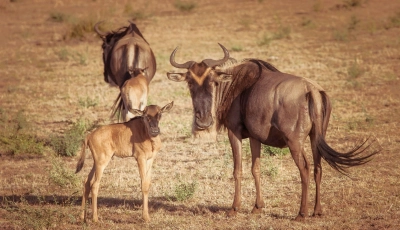
Western Corridor and Grumeti
The western part of the park is an open savanna. Here you can also see all the iconic African animals: lions, zebras, elephants, buffaloes, antelopes, and many others. The Grumeti and Mbalageti rivers are home to hippos and crocodiles.

Northern Serengeti: Kogatende, Lobo, and Lamai
The final stage of the Great Wildebeest Migration happens in the northern part of the Serengeti when large herds of wildebeest, zebras, and gazelles cross the wide Mara River. This area is very picturesque and a must-visit during a safari.
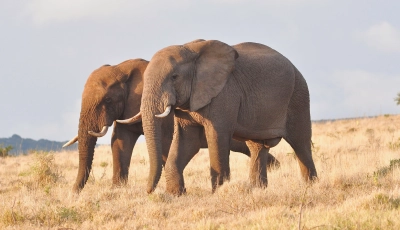
Activities in the Serengeti National Park
A classic safari in the park can be enhanced with unique experiences in the savanna. Travelers visiting the Serengeti can enjoy the following additions to their safari tour:
Hot air balloon safari
Drone use is prohibited in the Serengeti, making hot air balloon flights the only way to view the savanna from a bird's eye perspective. The view from above offers especially picturesque scenery and the opportunity for stunning panoramic photographs. The endless plains of the Serengeti inspired Disney's 'The Lion King', and they are especially impressive from above.
Breakfast and dinner in the savanna
Most lodges in the park can arrange breakfast or dinner right under the open sky in the Serengeti, allowing travelers to enjoy fine dining in one of the most scenic spots on the planet, accompanied by the sounds of the savanna.
Night safaris
While night safaris are prohibited within the park itself, they are allowed in neighboring private reserves. Ikoma is one of the most popular locations for night safaris, offering a chance to see leopards, civets, genets, and other nocturnal inhabitants of the savanna.
Animals in Serengeti National Park
The Serengeti is home to more than seventy species of large mammals, making it the best place on the continent to see all the famous African animals. The populations of many species here are significantly higher than in other well-known national parks. The Serengeti is also one of the few places where you can spot Africa's rarest animal - the Eastern black rhinoceros.
It's important to remember that the Serengeti is a vast park. Animals are constantly on the move, and sometimes you can travel 30 minutes on a game drive without major sightings. Your experienced safari guide will coordinate with colleagues via radio to locate where animals have recently been sighted.
How much does Serengeti Safari cost?
The cost of a vacation in the Serengeti depends on many factors, including the season, choice of accommodation, length of stay, and so on. The national park charges entry fees, which are typically included in the cost of safari packages.
A mid-range safari in the Serengeti with a reliable tour operator typically costs between USD $400 and $600 per person per day. However, there is no upper limit for luxury safaris, as some exclusive lodges can charge thousands of dollars per night.
History of the Serengeti National Park
Before the arrival of Europeans in Africa, little was known about the grassland plains of the Serengeti. The region that is now the national park was inhabited by various African tribes. The first recorded observations of the region were made by Austrian explorer Oscar Bauman, who visited in 1892.

The history of the Serengeti as a protected area began in 1913, when German colonial authorities declared the ecosystem a game reserve, significantly restricting hunting. After World War I, Tanganyika came under British mandate. In 1923, the British government expanded the game reserve, and in 1951, the Serengeti was declared a national park. With this status, any human activity - construction, hunting, logging, etc. - within the park became illegal. The Maasai tribes living in the park were forcibly relocated outside the Serengeti. Today, only photo tourism and the construction of hotels in designated areas are permitted.
In 1979, the Serengeti was inscribed on the UNESCO World Heritage List, marking the beginning of the park's modern development era. Now, it is one of the most popular parks in Africa, visited by more than 400,000 people annually. This designation has helped preserve the unique ecosystem of the Serengeti, ensuring its vast landscapes and abundant wildlife continue to thrive and enchant visitors from around the world.
Wildlife conservation projects in the Serengeti
There are a number of wildlife conservation projects and initiatives in the Serengeti. Here are two prominent ones:
Moru Kopjes Rhino conservation
The Serengeti is one of the few places where black rhinos, Africa's rarest large mammal, can be seen. Due to intense poaching at the beginning of the century, the rhino population decreased dramatically. According to the World Wildlife Fund, there were about 70,000 individuals in the 1960s, but by the early '90s, only 2,400 rhinos were left in the wild. Thanks to conservation efforts, the population has been partially restored; today, about 5,000 rhinos live in Africa.
Important conservation work to protect rhinos is carried out by the Frankfurt Zoological Society in the Moru Kopjes area of the Serengeti. The colony is protected by park rangers, and the number of rhinos is gradually increasing. Recently, the Serengeti National Park administration allowed travelers to approach the colony for a special fee.

Serengeti De-Snaring Program
Annually, poachers set thousands of traps and snares in the Serengeti. To combat this, the Frankfurt Zoological Society founded the Serengeti De-Snaring program. Project staff and rangers patrol the park, collect traps, and assist ensnared animals. If poachers are spotted, rangers detain them and hand them over to the police.
The project is funded by donations from participating tour operators. The current list of sponsors for the Serengeti De-Snaring can be found on the program's website.
Frequently Asked Questions about the Serengeti
By safari vehicle
Most safaris in Northern Tanzania begin in the city of Arusha, the closest major city en route to the national parks from Kilimanjaro International Airport. Travelers rest in Arusha after their flight, and the safari begins the following day.
Before reaching the Serengeti, visitors usually explore smaller parks such as Tarangire, Lake Manyara, and Ngorongoro, which are located on the way from Arusha to the Serengeti. Direct travel to the Serengeti is exhausting; the journey from Arusha without stops takes 8-9 hours, consuming an entire day, and you might not see any animals. In that case, the vehicle arrives at the Serengeti by around 4-5 PM, but by 6 PM, all travelers must be at their hotel, as staying in the savanna after this time is not allowed according to the park rules.
Therefore, visiting the Serengeti is recommended to be combined with safaris in other Tanzania national parks. By visiting them on the way to the Serengeti, travelers can see all the main safari attractions of Northern Tanzania, making the Serengeti the climax of the trip.
By plane
If the plan includes only visiting the Serengeti, flying is the best option. Regular flights from Arusha and Kilimanjaro airports directly to the Serengeti are available. You can book a charter flight that will depart at a convenient time for you and only with you on board. The entire journey will take 1-2 hours. In the Serengeti, a safari guide will meet you, and you will immediately begin acquainting yourself with the most famous park in Africa.
The Serengeti has several airstrips. If your safari starts in the central part of the park, the plane will land at the Seronera airstrip; if in the western part - at the Grumeti airstrip. The northern part of the Serengeti is served by the Kogatende and Lobo airstrips.
Traveling from Lake Victoria
Most travelers visit the safari parks of Northern Tanzania from east to west: Lake Manyara, then Tarangire, Ngorongoro, and finally - the Serengeti. However, some visitors start their Tanzanian adventure from Lake Victoria in the west of the country and then visit the safari parks. In this case, the Serengeti will be the first park on the safari trip. The journey by off-road vehicle from the city of Mwanza on the shores of Lake Victoria to the Ndabaka gate - the western entrance to the Serengeti - takes two to three hours.
The Serengeti is the third-largest natonal park in Tanzania. Conventionally, its territory is divided into four parts: Seronera (central part), Western Corridor, southern, and northern. To comfortably explore the park, it's recommended to plan four to six days, two to three of which you will spend in Seronera, and the remaining in areas where the Great Migration is seasonally located. A trip will require four to six days in total.
This duration allows for a leisurely visit to all key locations and longer stays in the most interesting places. An additional day can be allocated for rest at the hotel, especially if you are traveling with children - safari trips and game viewing are very enriching but can be tiring.
If you simply want to see Tanzania's wildlife, there is no need to travel to remote areas of the Serengeti where the Great Migration is not present at the time. Such a trip would take a lot of time, and practically all animals of the Serengeti can be observed in the area of the Migration. A safari near the Migration will be much richer without the need for extensive travel across the park.
You can visit the Serengeti all year round. When planning your trip, it's important to consider the following seasonal differences:
Rainy seasons
Tanzania has two rainy seasons. The "short rains" occur from early November to early January, and the "long rains" - from late March to the end of May. Typically, rains start in the latter half of the day when travelers are already returning to their hotel. Some days may be completely dry, while others can have rain throughout the day. During this time, the savanna is covered with thick green grass, new waterholes appear, and animals can be found in various parts of the park. The dense vegetation can make it difficult to spot servals, caracals, dik-diks, and other small inhabitants.
Safari lodges offer seasonal discounts, making trips more affordable with fewer visitors in the park. Wet season safaris suit travelers preferring a secluded experience.
Christmas holiday season
The holiday season starts on December 20th in Tanzania. Despite the high likelihood of rain, hotel prices peak during this time, and reservations must be made six months in advance.
Dry seasons
From mid-January to the end of February and from mid-June to the start of October, Tanzania experiences dry seasons. During these periods, animals tend to stay closer to water sources. The culmination of the Great Migration occurs in July-August, with hundreds of thousands of wildebeests and zebras crossing the Grumeti and Mara rivers.
The dry seasons are traditionally popular among visitors to the Serengeti, and you should be prepared that dozens of other vehicles will be watching the animals alongside you.
Interseason
In March and June, Tanzania experiences a change of seasons. Relatively dry and clear weather prevails, and there are fewer visitors in the park compared to the dry seasons. This period combines the best of both seasons and is worth considering if your travel dates are flexible.
Interesting facts about the Serengeti National Park
Since the 19th century, the Maasai tribes have been grazing their herds in the area now known as the Serengeti. They called this land "siringet," which translates to "endless plains." Over time, "siringet" transformed into "Serengeti." The name has stuck and is used to this day.
It's impossible to accurately count the number of animals in the Serengeti ecosystem: the park borders other conservation zones, and savanna residents freely leave and return to the Serengeti.
Here are some approximate numbers:
Elephants: according to the Tanzania Wildlife Research Institute (TAWIRI), the population in 2020 was about 7,000 individuals, up by a thousand from 2014.
Buffaloes: TAWIRI noted a population of 60,000 in 2020, an increase of 10,000 from 2014.
Lions: Britannica information indicates about three thousand individuals.
Great Migration animals: a research team led by Professor Alexandra Swanson from the University of Minnesota reported that the population of wildebeests, other antelopes, and zebras was 1.6 million in 2015.
The Altezza Travel team has visited nearly all national parks in Southeast Africa. We can confidently say that the safari experience in the Serengeti is truly unmatched due to its vast number of animals.
The Great Migration of animals occurs year-round. The most interesting moments of the migration — the crossing of the Mara, Mbalageti, and Grumeti rivers — take place from June to August. At this time, ungulates gather into huge herds and cross the rivers teeming with crocodiles. Such a concentration of large mammals is unparalleled anywhere else on the planet.
The best book about the Serengeti National Park is "Serengeti Shall Not Die" by Bernhard Grzimek, a German zoologist who moved to Africa shortly after World War II. The book served as the script for the eponymous film, awarded an Oscar in 1960.
"Serengeti Shall Not Die" is one of the books included in the training program for our employees. Future managers of Altezza Travel begin their acquaintance with the park's history from its pages.

















 Serengeti National Park, Tanzania
Serengeti National Park, Tanzania 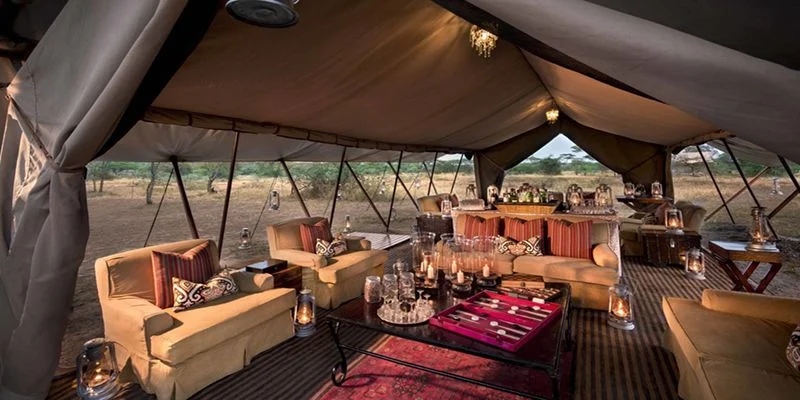
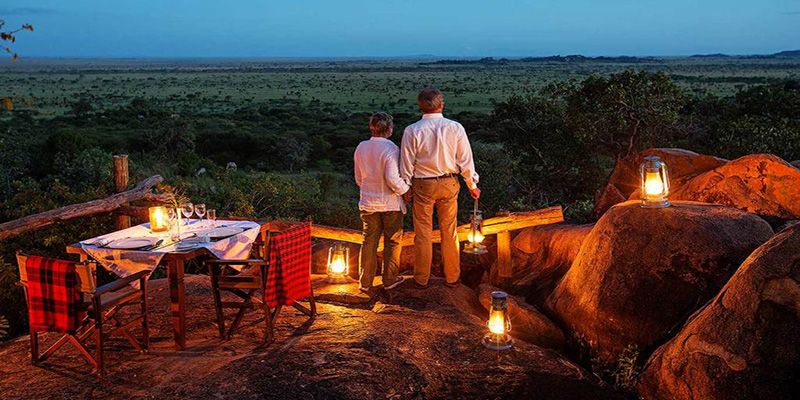

 View Sample Safari itinerary
View Sample Safari itinerary 










